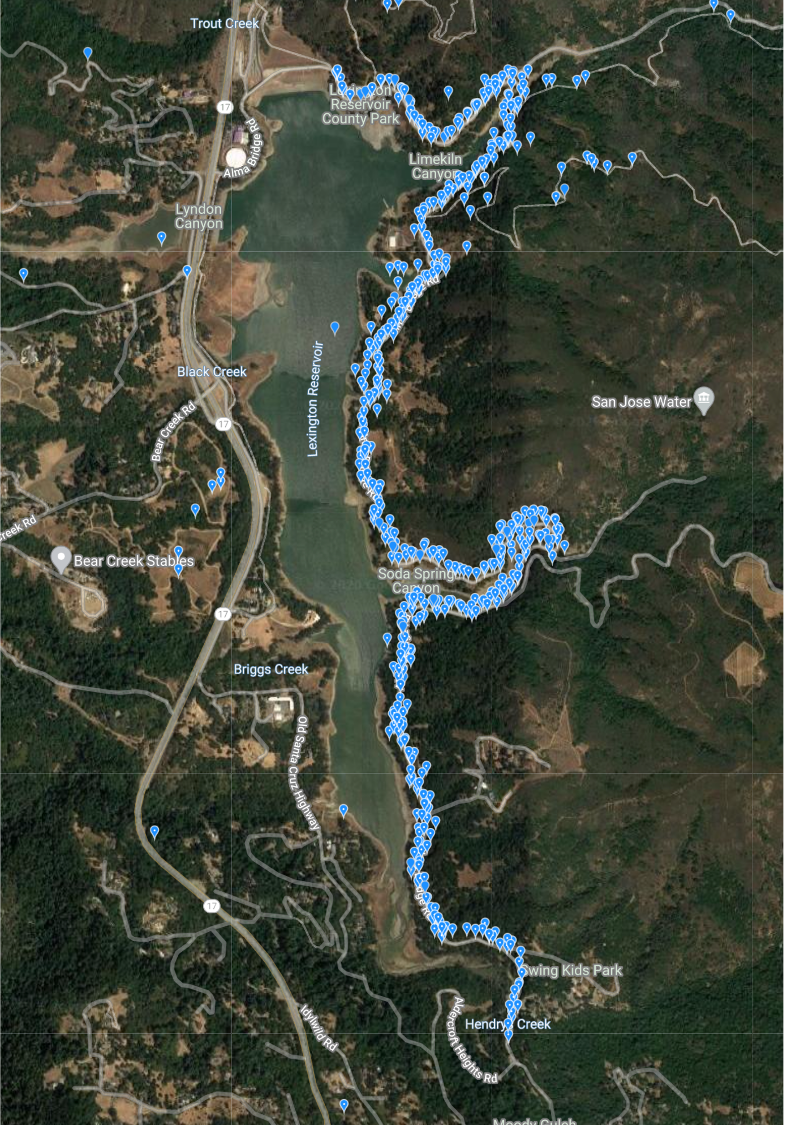Where we are now
- meravvon
- Dec 17, 2020
- 1 min read
Updated: Dec 18, 2020
Our team of volunteers surveys a 4 miles section of the Alma Bridge Rd once a week during the newt migration season, and twice a week during the peak of migration. We document all our data using the smartphone app iNaturalist. Each volunteer takes photos of every dead newt found on the road. Photos are later uploaded to iNaturalist and added to our project. You can learn more about them here - https://www.inaturalist.org/projects/pacific-newts-all-lexington-reservoir-area

During their winter migration season, newts migrate to creeks and ponds in order to reproduce. Near Lexington Reservoir, newts need to cross Alma Bridge Rd, and many of them get hit by cars. Newts start migrating after the first rains. We find most roadkills between December and April, with fewer roadkills on November and May. The newts migrate in rainy nights, but also during drier weather conditions. For example, during February 2020 we had close to 0” of rain, but we still observed 904 dead newts on the road. Possibly, once they sense about a 4” rain threshold, they start migrating, rain or shine. The newts usually go out at night, but from time to time we would see them out on the road or on the trails during the day. Sadly, we only documented about 90 live newts in the Lexington Reservoir area, compared with 10,631 dead newts during the two fully surveyed years.







We'll have to wait until the end of the season for the result. This is not part of the newt patrol survey, it's a different study done by a consultant team (coordinated by Midpeninsula Open Space District)
Neat! It looks like the traps are for the ones that make it across the road. What's the ratio of trapped survivors to road kills?
We can't tell which way the newts are going according to the roadkills we find, but this is part of what the population study is checking. They placed drift fences with pitfall traps on both sides along the road. They can compare the numbers of live newts trapped on each side of the fence to learn about the direction they're going.
At the beginning of the season, most newts were either out foraging, or going down from the hills into the reservoir. Some newts, especially juveniles, were going up from the reservoir to the hills. Later on, after they'll finish reproducing, they will start returning from the reservoir up to the hills.
in the high death areas, what percentage is going which direction a time of death and where do you think they coming from/going to?
That's a great idea. You can view a similar analysis that was done with a consultant team using our data. It's on the last page of this report - https://www.openspace.org/sites/default/files/20200923_Agmt_NewtMortalityPopulationStudyAlmaBridgeRd_R-20-104.pdf